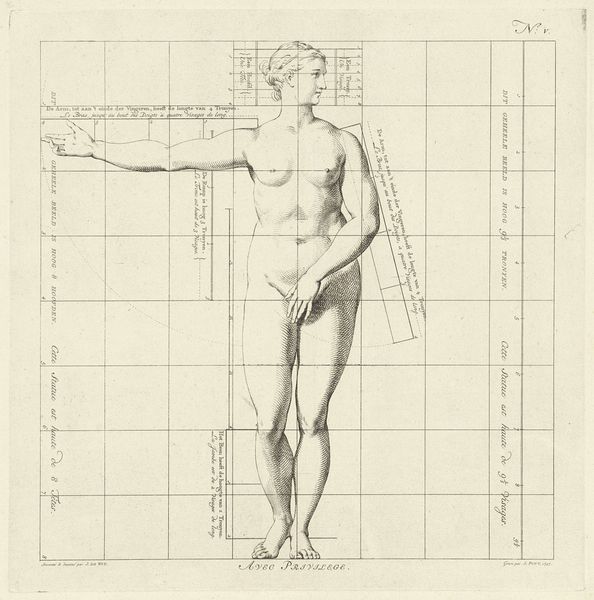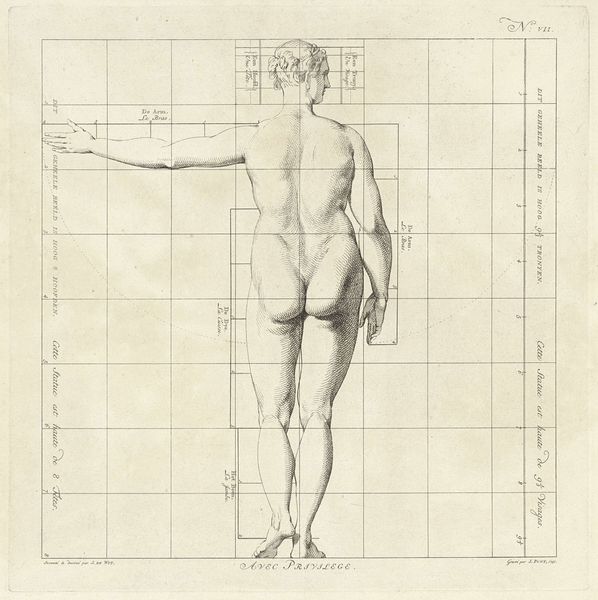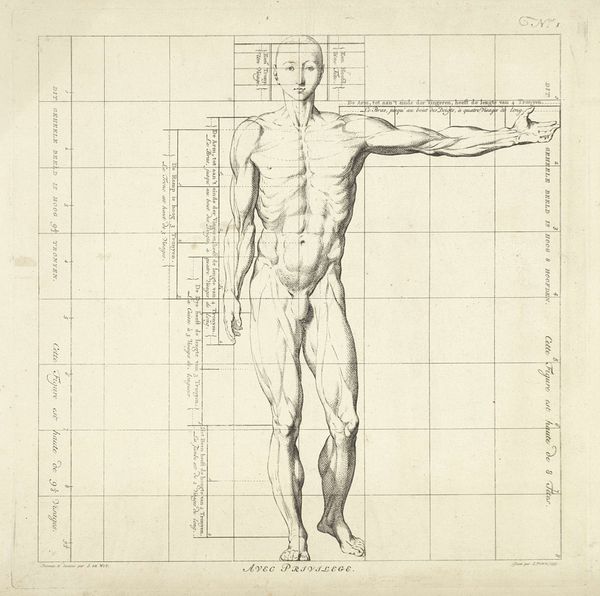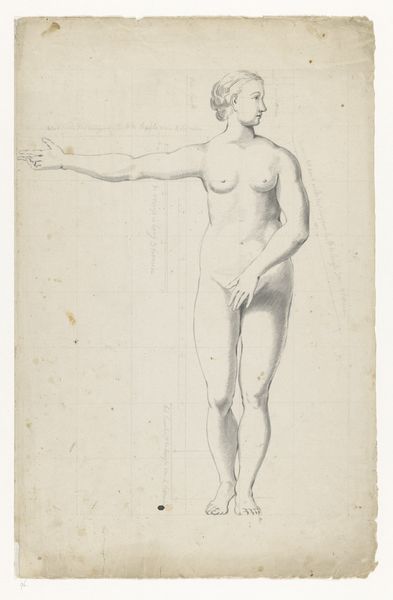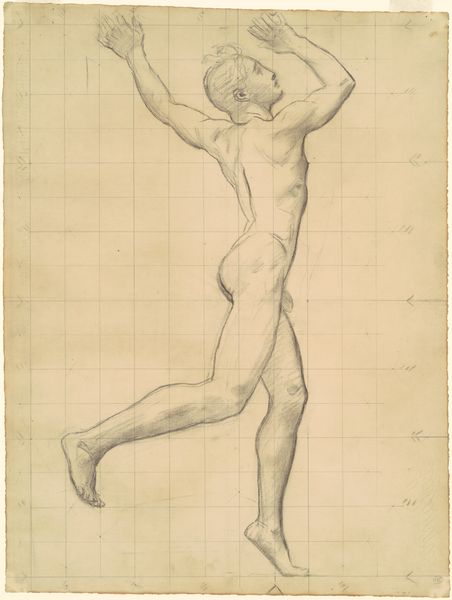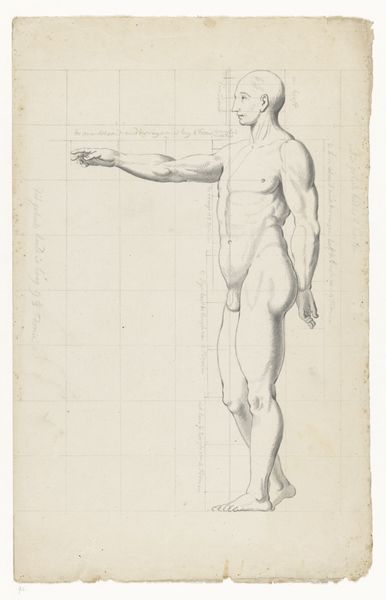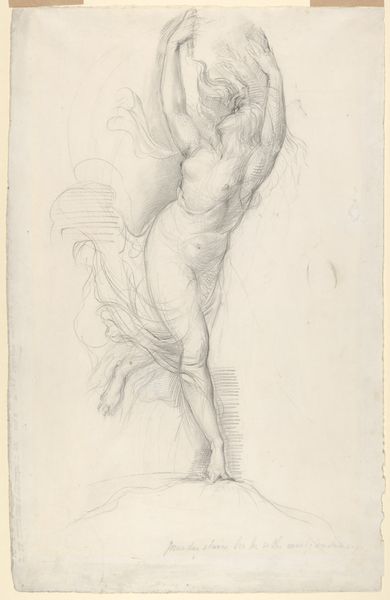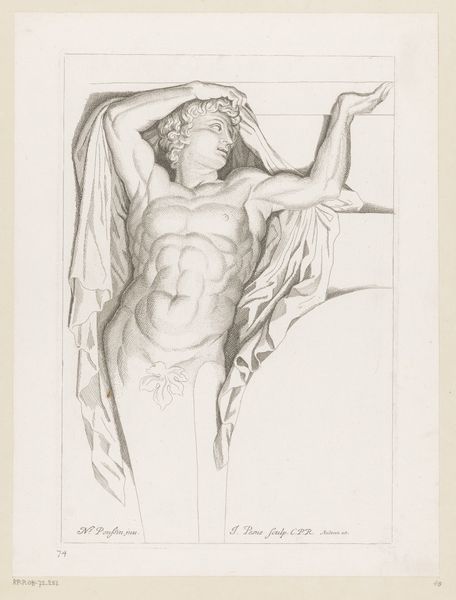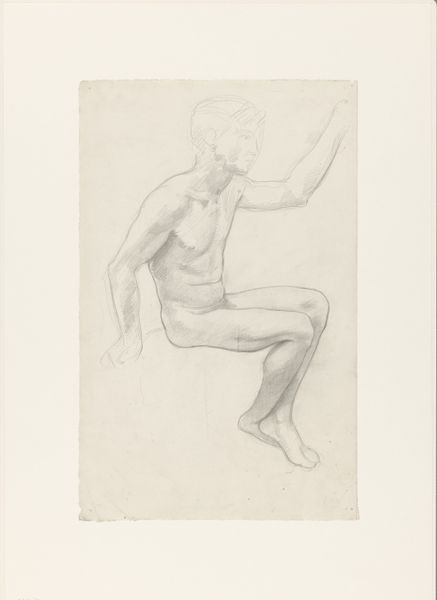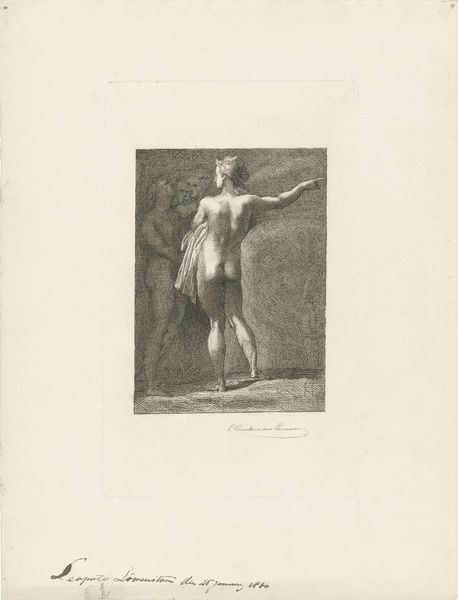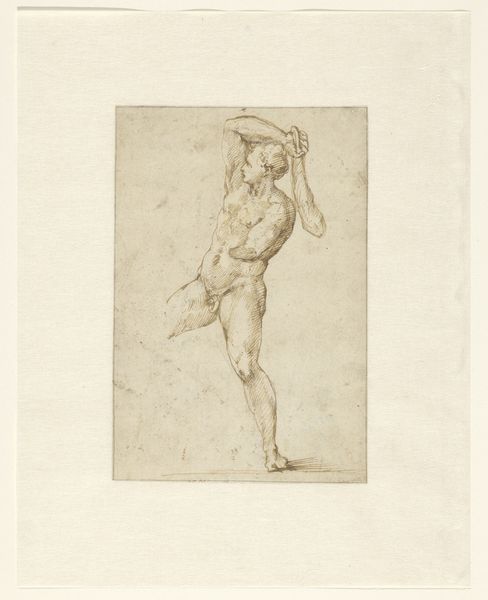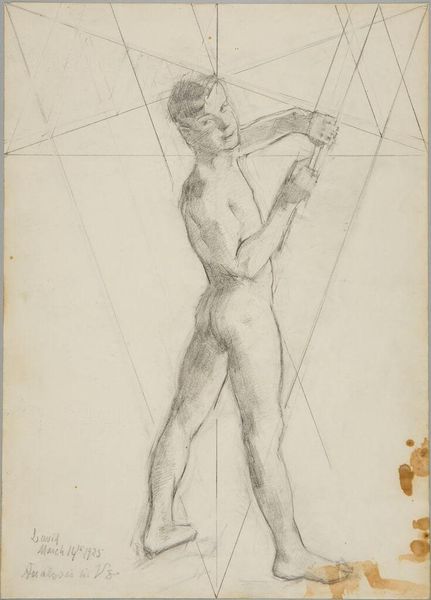
drawing, pencil
#
portrait
#
drawing
#
amateur sketch
#
light pencil work
#
pencil sketch
#
classical-realism
#
figuration
#
personal sketchbook
#
idea generation sketch
#
sketchwork
#
dynamic sketch
#
pencil
#
sketchbook drawing
#
storyboard and sketchbook work
#
academic-art
#
nude
#
profile
#
initial sketch
Dimensions: height 380 mm, width 377 mm
Copyright: Rijks Museum: Open Domain
Editor: This is Jan Punt's "Proportiestudie van het lichaam van een vrouw," made in 1747. It’s a pencil drawing, and I find the grid behind the figure quite striking. It feels almost like a mathematical diagram rather than a free-flowing sketch. How do you interpret this work, considering its historical context? Curator: The grid is indeed key. This wasn't simply an artistic endeavor, but rather an exploration within a specific socio-cultural framework. Think about the 18th century’s fascination with reason and order. The Enlightenment prized the systematic understanding of the world. Does that grid suggest something about how the body itself was being understood or perhaps even controlled? Editor: It does! The figure looks so... contained, almost imprisoned by the grid. It makes me wonder about the academic approach to the body at the time and if the grid alludes to attempts to regulate it through art? Curator: Precisely. Furthermore, consider the tradition of the *Académie*. Standardizing artistic training and the very depiction of the human form. Do you think this drawing participates in that tradition, reinforces it, or perhaps subtly questions it? Also, who benefits from that systemization of knowledge? Editor: It definitely looks like it supports standardization. Perhaps, on one hand, it ensures accessibility to drawing the human form, but on the other, the way it's applied may limit innovation. Curator: Good point! So, the grid is not just a compositional element; it’s a statement. It speaks to institutional control, artistic pedagogy, and even the power dynamics embedded within the representation of the human form. What do you make of it now? Editor: It definitely feels less like just an academic exercise and more like a document reflecting broader cultural values of the time, about both knowledge and power. Thanks for the insight. Curator: It’s been enlightening to discuss it with you. The beauty of art lies in how it reflects the society that creates it, whether intentionally or unintentionally.
Comments
No comments
Be the first to comment and join the conversation on the ultimate creative platform.

